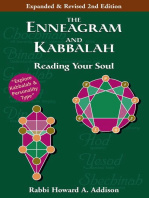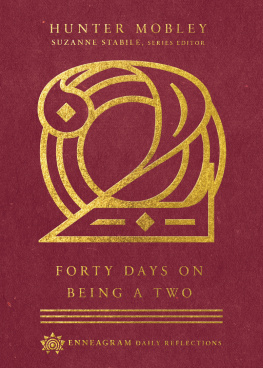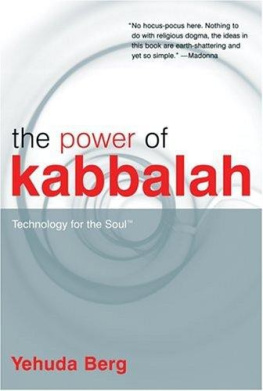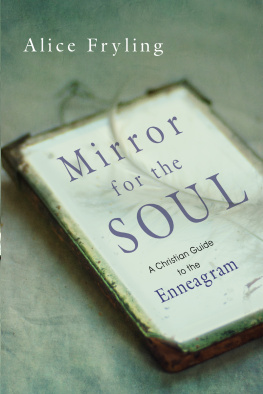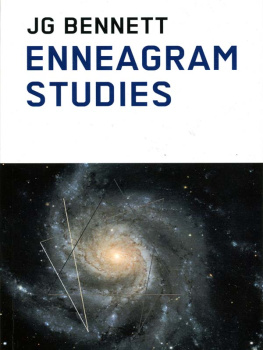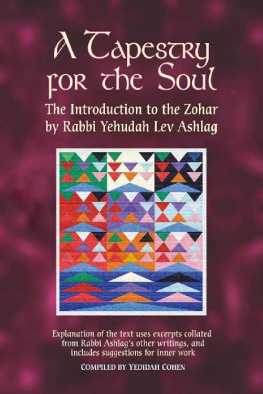Rabbi Howard A. Addison - The Enneagram and Kabbalah (2nd Edition): Reading Your Soul
Here you can read online Rabbi Howard A. Addison - The Enneagram and Kabbalah (2nd Edition): Reading Your Soul full text of the book (entire story) in english for free. Download pdf and epub, get meaning, cover and reviews about this ebook. genre: Religion. Description of the work, (preface) as well as reviews are available. Best literature library LitArk.com created for fans of good reading and offers a wide selection of genres:
Romance novel
Science fiction
Adventure
Detective
Science
History
Home and family
Prose
Art
Politics
Computer
Non-fiction
Religion
Business
Children
Humor
Choose a favorite category and find really read worthwhile books. Enjoy immersion in the world of imagination, feel the emotions of the characters or learn something new for yourself, make an fascinating discovery.
- Book:The Enneagram and Kabbalah (2nd Edition): Reading Your Soul
- Author:
- Genre:
- Rating:3 / 5
- Favourites:Add to favourites
- Your mark:
- 60
- 1
- 2
- 3
- 4
- 5
The Enneagram and Kabbalah (2nd Edition): Reading Your Soul: summary, description and annotation
We offer to read an annotation, description, summary or preface (depends on what the author of the book "The Enneagram and Kabbalah (2nd Edition): Reading Your Soul" wrote himself). If you haven't found the necessary information about the book — write in the comments, we will try to find it.
The Enneagram and Kabbalah (2nd Edition): Reading Your Soul — read online for free the complete book (whole text) full work
Below is the text of the book, divided by pages. System saving the place of the last page read, allows you to conveniently read the book "The Enneagram and Kabbalah (2nd Edition): Reading Your Soul" online for free, without having to search again every time where you left off. Put a bookmark, and you can go to the page where you finished reading at any time.
Font size:
Interval:
Bookmark:
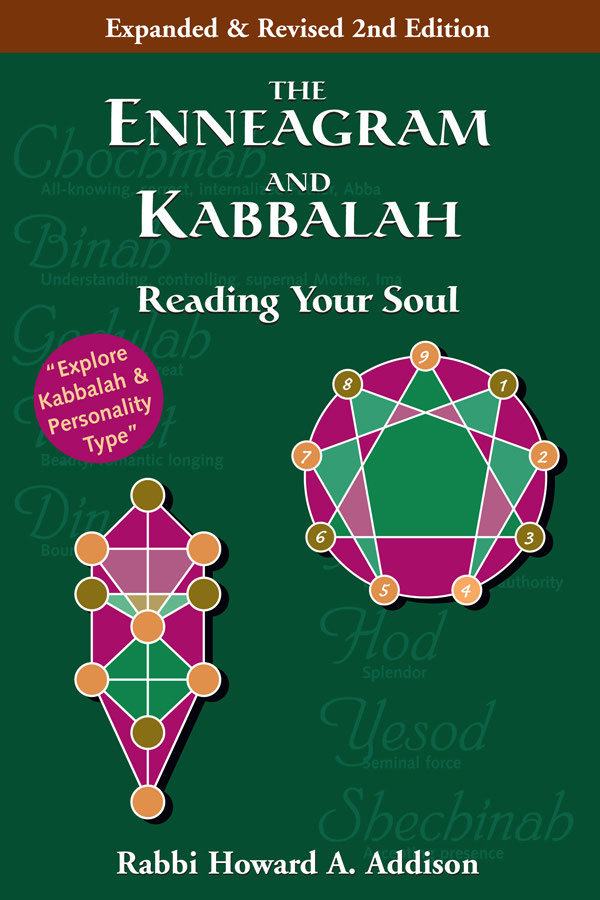
Reading Your Soul
2ND EDITION
Rabbi Howard A. Addison
Author of Cast in Gods Image: Discover Your Personality Type Using the Enneagram and Kabbalah

The Enneagram and Kabbalah, 2nd Edition:
Reading Your Soul
2006 First Printing, Second Edition
1998 First Edition
2006 & 1998 by Howard A. Addison
All rights reserved. No part of this book may be reproduced or transmitted in any form or by any means, electronic or mechanical, including photocopying, recording, or by any information storage and retrieval system, without permission in writing from the publisher.
For information regarding permission to reprint material from this book, please mail or fax your request in writing to Jewish Lights Publishing, Permissions Department, at the address / fax number listed at the bottom of this page, or e-mail your request to permissions@jewishlights.com.
The Library of Congress has cataloged the first edition as follows:
Addison, Howard A., 1950
The enneagram and kabbalah : reading your soul / by Howard A. Addison
p. cm.
Includes bibliographical references.
ISBN 1-58023-001-6 (pb)
1. Spiritual lifeJudaism. 2. Self-perceptionReligious aspectsJudaism. 3. Self-actualization (Psychology)Religious aspectsJudaism. 4. Enneagram. 5. Sefirot (Cabala) I. Title.
BM723.A33 1998
296.7dc21
9810641
CIP
Second Edition
10 9 8 7 6 5 4 3 2 1
Manufactured in the United States of America
Cover design by Bronwen Battaglia
Text design by Sans Serif, Inc.
For People of All Faiths, All Backgrounds
Published by Jewish Lights Publishing
A Division of LongHill Partners Inc.
Sunset Farm Offices, Route 4
P.O. Box 237
Woodstock, VT 05091
Tel: (802) 457-4000 Fax: (802) 457-4004
www.jewishlights.com
It is hard to imagine more than a decade has passed since my first excited encounters with the Enneagram and its connections to Kabbalah. I continue to marvel at the new insights that these sacred maps of the human condition reveal. It has been and remains an honor to share the wisdom of these two systems with audiences of diverse ages, cultures, and religious beliefs.
Since The Enneagram and Kabbalah: Reading Your Soul was first published I have had the opportunity to further explore the relationship between the Enneagram and the Kabbalistic Tree of Life, and their use in determining and understanding personality type, as described in the companion volume to this bookCast in Gods Image: Discover Your Personality Type Using the Enneagram and Kabbalah (Woodstock, VT: Jewish Lights Publishing, 2001). In this practical guidebook, I help readers use the wisdom of the Enneagram and Kabbalah to recognize the roots of their spiritual makeup as well as determine the personality types of the people around them. These spiritual tools help readers find meaning and gain insight into their own patterns of behavior, strengths, and weaknesses, as well as in others, and use this powerful information to strengthen and enrich their own spiritual growth and the relationships with those they love. As the workbook companion to the book you now hold in your hands, Cast in Gods Image also includes hands-on journaling exercises and guided meditations, drawn from core imagery of Lurianic Kabbalah, to help readers determine the sacred tasks that are uniquely theirs to perform. The two books together are a powerful resource in pursuing self-fulfillment, by informing and encouraging readers to address the most important questions in life: Who am I and what am I specifically called to do in this world?
I also have had the privilege of learning from the works of other authors whose findings have enriched my own understanding of the Enneagram and Kabbalah relationship. A. H. Almaas, the creative founder of the Diamond Approach to psychospiritual growth, helped me draw sharper points of connection between the sefirot and the Holy Ideas through his insightful text Facets of Unity: The Enneagram of Holy Ideas (Berkeley, CA: Diamond Work, 1998). His colleague, Sandra Maitri, presented personality development analogues to the Kabbalistic idea of shevirat ha kelim (the shattering of the vessels) in her book The Spiritual Dimension of the Enneagram: Nine Faces of the Soul (New York: Jeremy P. Tarcher/Putnam, 2000).
Of special note is James Empereurs The Enneagram and Spiritual Direction: Nine Paths to Spiritual Guidance (New York: Continuum, 1997). He masterfully applied Elizabeth Lieberts stages of adult spiritual growth (Elizabeth Liebert, Changing Life Patterns: Adult Development in Spiritual Direction [Mahwah, NJ: Paulist Press, 1992]) to each of the Enneagram types. I continue to learn from his broad experience and profound wisdom as both an Enneagram teacher and as a spiritual guide. In this book, the correlations to the four worlds and applications of Kabbalistic spiritual practices are mine; the core insights into each types stages of growth are basically his.
I pray that this new edition of The Enneagram and Kabbalah: Reading Your Soul helps those who read it to come closer to others, to the Blessed Holy One, and to themselves.
Howard A. Addison
As a younger man, I was thrilled by the tales of Kabbalists and Hasidic masters. I marveled at the spiritual power of their teachings and the magnetism of their personalities. Most fascinating of all were their powers of clairvoyance. Again and again, I would wonder at the abilities of people like Rabbi Yaakov Yizhak Halevi Horowitz, the nineteenth-century Seer of Lublin who could read peoples souls. Supposedly he could tell by glancing at someones forehead from which location on the Tree of Life their spirit had descended and what their destiny would be.
Years elapsed since I first pondered that aspect of Jewish mysticism, and other considerations drew my attention. Yet in February 1995 my interest in mysticism was reignited. The occasion was a Spirituality seminar sponsored by the Alban Institute, an interdenominational center near Washington, D.C., that offers continuing training for clergy and congregational leaders. There, through the tutelage of Roy Oswald, I was introduced to the Enneagram.
Two aspects of the Enneagram affected me profoundly at the seminar. The first was the Enneagrams powerful insights. In the past other methods of personality typing such as Myers-Briggs had helped me understand my own character and how it interacted with the styles of others. Learning my Enneagram number proved nothing short of transformative. To find my weakness revealed as the shadow side of my strength, to discover that what I had considered my noble accomplishments were motivated, in part, by ignoble intent was profound and changed my spiritual outlook.
The relationship between the Enneagram and Kabbalah (Jewish mysticism) also struck me during the seminar. While the two systems are not identical, their points of correspondence seemed almost self-evident. Drawing on similar ancient and medieval sources, the nine points on the Enneagram and the ten sefirot (potencies) on the Tree of Life (Etz Chayim) each posit a correlation between the structure of reality and the soul. My subsequent reading in the history and insights of the Enneagram and Kabbalistic psychology have given ongoing confirmation to my initial impressions of a correspondence between the two systems.
Next pageFont size:
Interval:
Bookmark:
Similar books «The Enneagram and Kabbalah (2nd Edition): Reading Your Soul»
Look at similar books to The Enneagram and Kabbalah (2nd Edition): Reading Your Soul. We have selected literature similar in name and meaning in the hope of providing readers with more options to find new, interesting, not yet read works.
Discussion, reviews of the book The Enneagram and Kabbalah (2nd Edition): Reading Your Soul and just readers' own opinions. Leave your comments, write what you think about the work, its meaning or the main characters. Specify what exactly you liked and what you didn't like, and why you think so.

